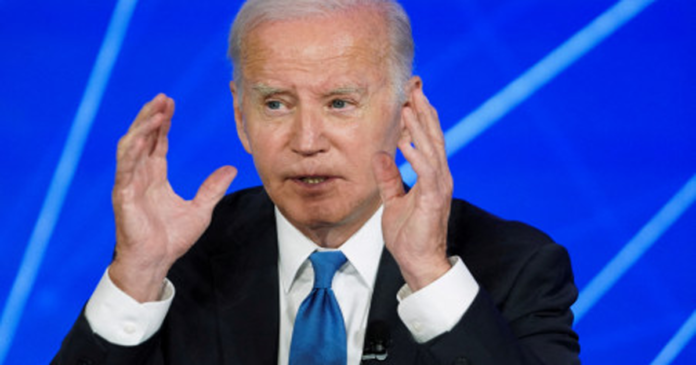If he could, he would probably pick a different name: Joe Biden is still having trouble persuading Americans of the advantages of the Inflation Reduction Act a year later.
Biden fights for political gain: The incredibly ambitious project aims to boost social fairness, accelerate America’s transition to clean energy, and rebuild its industrial might.
Upon the passage of the $750 billion plan into law on August 16, 2022, the nation was undergoing a substantial price increase that was undermining the popularity of the Democratic leader.
Therefore, “the Inflation Reduction Act” seemed like a fitting name, even if the plan’s primary goal was to accelerate the switch to green energy by providing about $350 billion in subsidies and tax credits.
At a recent gathering with fundraisers in the western state of Utah, Biden said, “I wish I hadn’t called it that because it has less to do with inflation than it has to do with providing alternatives that generate economic growth.”
The 80-year-old Democrat, who is running for re-election in 2019, had already inaugurated a renewable energy plant that, in his words, represents the best of the IRA.
In a state where wildfires and extreme temperatures are common, this project in nearby New Mexico entails the construction of wind turbines that produce electricity on the site of a factory that originally produced plastic plates.
private funding
According to environmental organisation representative Lori Bird of the World Resources Institute, “This is the most significant climate and clean energy legislation in US history.”
She add that the rewards it offers are design to last for a decade, and its results should last beyond that.
According to a study conducted by nine teams of American experts, the IRA should lower US emissions from 2005 levels by between 43 and 48 percent by 2035.
The proclaimed goal of halving emissions by 2030 is not met by that.
Many campaigners claim that in order to achieve that goal, it will be necessary to use both financial “carrots” and regulatory “sticks”; nevertheless, if these measures make it to the conservative Supreme Court, they may encounter significant resistance.
For the time being, Biden’s top priority is figuring out how to profit from what he terms “Bidenomics” before the November 2024 presidential elections.
The phrase intends to cover both the current robustness of the US economy and a promising future, backed in part by substantial investment initiatives in infrastructure and technology, as well as contributions from the IRA.
It will take some time.
Most Americans have only a vague awareness of the numerous promises made by these programs, which include reducing insulin prices, democratizing internet access, supporting the advancement of quantum computing in response to Chinese competition, and manufacturing millions of electric cars while generating job opportunities.
“People don’t know the changes that are taking place are a consequence of what we did yet,” Biden said to the Utah donors on Thursday. And it will take some time before that can be seen through.
However, Biden appears to take pleasure in highlighting that Republican politicians don’t seem to face any problems when it comes to accepting IRA funding for projects in their own districts.
On Wednesday, he even singled out Congresswoman Lauren Boebert, a particularly ardent Trump supporter.
Using evident sarcasm, Biden highlighted that this “very quiet Republican lady” who represented Colorado’s wind-turbine district had opposed the IRA, along with other members of her party.
Biden stated, “She railed against its passage, but now she’s welcoming it,” with a smile. Reuters

